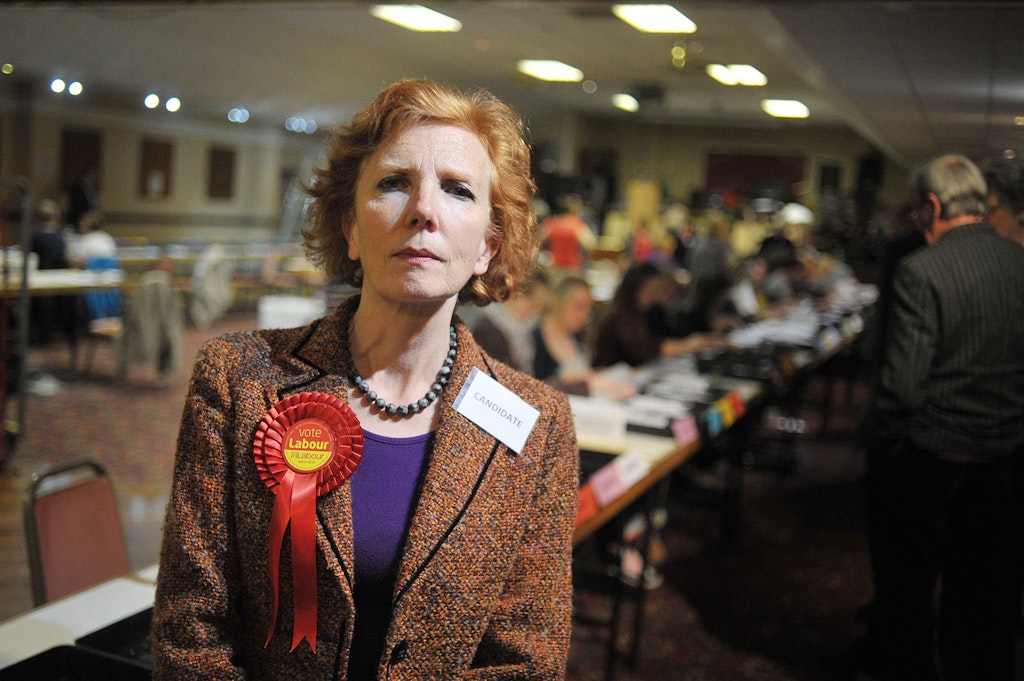Alastair Campbell’s gender neutral nonsense
Alastair Campbell might not care about single-sex spaces, but women do
In the late 1990s Alastair Campbell was a master of reading the public mood and giving them what they didn’t quite know they needed; but were nevertheless delighted to receive. He was the one who told Blair to adopt the phrase “the peoples’ Princess” the day after Diana’s death, which was a phenomenal PR success. He also told them that John Major tucked his shirt into his underpants and afterwards no one could quite unsee this “90%” truth.
Campbell was the epitome of the “spin doctor” and when he ran his empire of press officers from 12 Downing Street, the public were constantly dizzy as he spun stories like a magician
On Friday Campbell posted on X, alongside a photo of the door of a toilet marked “gender neutral”:
My Tree of the Day is the one that was made into this door. I mean, honestly, what is the problem? You go into a communal space, there are men and women, no urinals full of fag ends and chewing gum, no spraying and checking out for size, just private toilets for all. Much better.
When a spin doctor says “honestly” you need to narrow your eyes. He could be anything but tranparent. If anyone puts considerable thought into a post, you can be certain that a skilled media manipulator such as Campbell does it with fervour. He cast his strategic eye around the raging trans debate, decided what he thought he needed to say, and packaged it into this carefully crafted tweet. If he pressed “send” confident that it would be well-received, then he had really misjudged the arguments against such a stance, but if he knew that it would not be successfully digested, then he had some other aim.
If his aim was to provoke then he certainly did. The arguments in favour of single-sex spaces are well-rehearsed and importantly, well aired, to the extent that at this point it is an outrage to claim you do not know them, especially if you are a decades-long, media-savvy commentator.
Many people replied to tell Campbell of the issues presented by voyeurism in such enclosed toilets, where spy cameras can be placed and then retrieved by men later and how this put women at risk. These are anything but “private” spaces. It is simply easier for men to do this in spaces they are legally entitled to be.
Campbell, though he undoubtedly knows such arguments, does not address the safety needs many women have outlined, such as the need for spaces where they will not be sexually or physically assaulted by men. A cubicle is not protection for women; physically powerful men can shove women into a cubicle quite easily when they are legally allowed to be near that cubicle and they find themselves unobserved. All that has happened with the provision of mixed sex space is that you have removed the need for such men to risk being seen entering a space marked “female” above the entrance door. For women who have been subject to male violence, mixed-sex toilets can be a place of deep unease. The assertion that “there are men and women” and that this is somehow unproblematic, ignores the statistical evidence about the potential threat to women of male strangers, never mind men they know. That threat is not always physical — a trauma response does not rely on the specific men in that space, at that time, but on her previous experience of male violence.
Arguments about the different needs of women when using a toilet include the need for somewhere to deal with issues arising from menstruation such as washing out bloody under clothes. This is made very difficult when you are aware strange men may be waiting outside as you do. Some of them might become impatient and knock on the door. Women are usually patient with other women, as we know the various reasons a woman might spend longer in the cubicle. We might shout to ask if she was okay, knowing that a woman could be miscarrying a pregnancy, or some other female specific need we could assist her with. We would not be confident to knock on the door of a man we suspected was masturbating or installing a spy camera, because the man might become violent if we did.
What Campbell does address is the most basic element of hygiene, but he does it from consideration of the way men use urinals — fags and chewing gum floating in them — but ignores the reality of what women know to be true, that men urinate where we will sit and that our shoes and trouser hems will be steeped in that urine. Some older women are not able to juggle their clothing and hover above wet seats as younger women might, in order to avoid a wet bottom, but even if they could as one woman told me of her elderly mother,
My mother who is well into her seventies, told me that on a bus trip to a nearby town she popped into Greggs. She went to the Ladies and was shocked to find them gender neutral as a large burly man was exiting. She was too scared to go in. She said there is absolutely no way she would use toilets where males are allowed in.
There are many examples of how women will be placed back on the urinary leash by the growing incidence of mixed sex toilets, which of course men have far less issue with, because men keep their tackle a long way from the urine of other men; women cannot. Statistically women pose far less physical or sexual threat to men in those spaces and as such some men may remain blissfully unaware of the problem with mixed sex space.
Campbell ignores some of the religious and cultural requirements of women who are unable to share close intimate spaces with men who are strangers. He ignores the needs of pregnant women, menstruating women, women suffering miscarriage. There is a reason Campbell does not include the word “woman” in his “much better” toilets, because he does not want to give them full consideration.
Crucially he suggests that the element of privacy is of paramount desirability, offering the “funny” reminder that men side-eye each other’s penises. But this is not what women think about when we object to men in our toilets. There are times women seek refuge from men, and single-sex toilets are sometimes places where women console and advise other women, both strangers and friends. Often the advice is about men and sometimes it is about how to remain safe from them. Older women sometimes help younger women in times of emotional suffering. I’m not romantically imagining some idyllic toilet friendship group, where everyone has a wonderful time, but women’s toilets can be a place where women take a breather together — a step away from the world of men.
Campbell’s words idly dismiss all of these objections or stated female needs. He suggests that women are overreacting and seeing a problem where there is none — at the same time as he focuses on the behaviour of men, rather than the needs of women.
Women were always going to turn him around at the door
Perhaps I am being overly generous in my nod to his media expertise, and he was in fact just stupidly arrogant, living in the late nineties again, where he could draw a magic cloak over the truth, and polish up the alternative version he wanted to present. In which case it really was a blundering misstep taken in gross ignorance of the fact that TERFy women don’t currently perform the political equivalent of tucking our shirt in our knickers. We win complex court cases to secure our rights, we challenge NHS policy decisions, we are winning the battle for our rights all over the place. I find it astounding that a man once so astute at judging the public, so skilled at media manipulation, would not have realised that the house of trans cards is tumbling, and toilets are actually a pretty silly entry point to the debate. Women were always going to turn him around at the door.
But I suspect Campbell knows some, or possibly all, of these arguments. He is not a stupid man and the media, where this debate rages unceasingly, is his perpetual playground. Joan Smith, the author concluded:
For you evidently. Women don’t want to share any part of public toilets with men. I’d be amazed if you weren’t aware of that – we’ve said it often enough – so I can only assume you don’t care what women think.
I think his aim was to ridicule and dilute the vast array of arguments women have offered for single-sex space with what he believed was a curt “nothing to see here”, succinctly rendering our objections impotent. Sadly, for Campbell after years of being told to look the other way on this issue, women are instead, increasingly reaching for the political microscope. He overstretched himself this time.
Campbell once said:
Failure, it is thought, is what sells and what people want to hear and read about. I am not so sure.
In this story though, your spin failed spectacularly, you landed on your face, and women were absolutely delighted to help you out with a ratio. Spin that.
Enjoying The Critic online? It's even better in print
Try five issues of Britain’s most civilised magazine for £10
Subscribe














